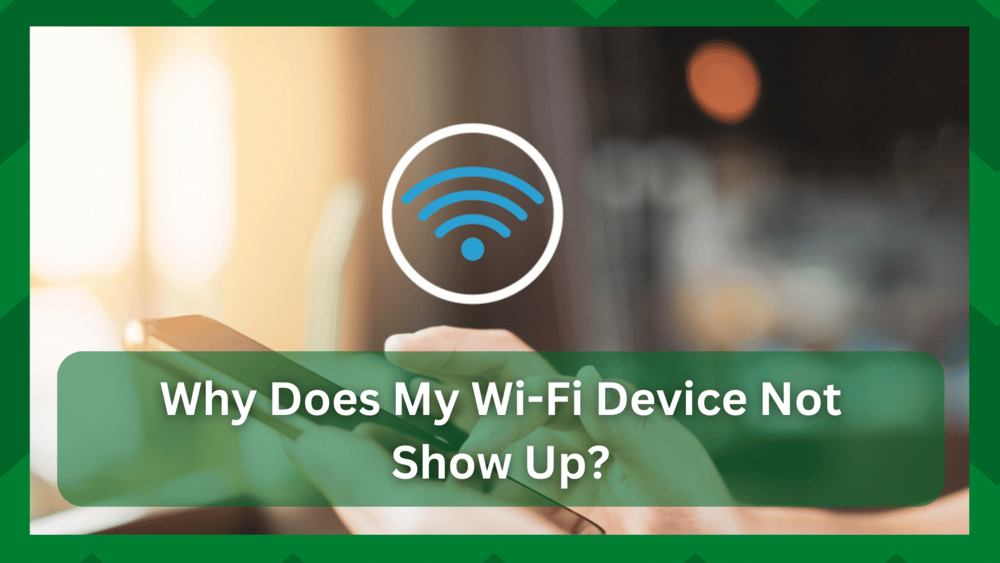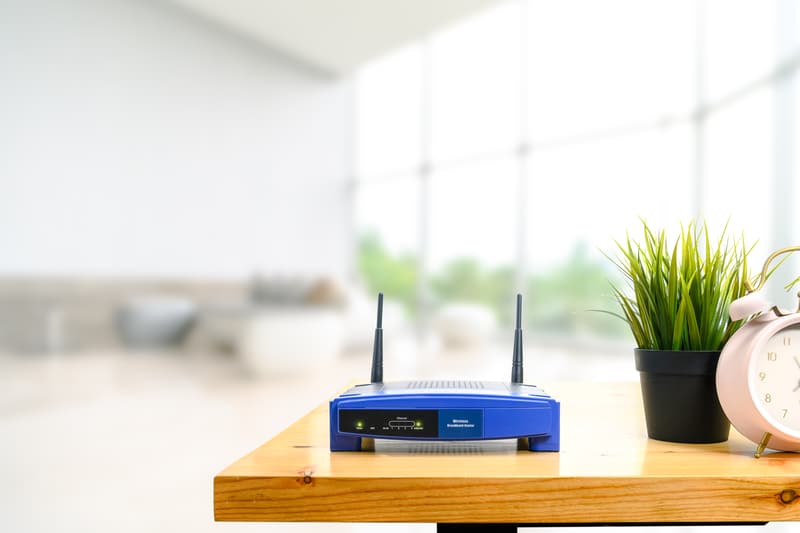
Wireless connections are the new dominant technology, and new routers are equipped in this manner to provide you with fast speeds and reliable connections. Numerous Wi-Fi routers on the networking market aim to provide stable and consistent connections.
Among the top brands are ASUS, Linksys, and Netgear. These routers will typically provide dual-band assistance, increasing network scalability.
Single-band routers are less expensive and ideal for small setups, but they lack range. If your router’s current single band is having problems, you won’t be able to switch to an alternate band, which reduces its range of capabilities.
Why Does My Wi-Fi Show Up Twice?
Why does my Wi-Fi show up twice? Have you ever noticed that your available networks might have the same Wi-Fi SSID duplication and you are unsure which one to choose? What are the chances that your neighbor has chosen the exact SSID for their network as well?
So there are a few things you should keep in mind when using a Wi-Fi network. That is having a unique SSID, but you may occasionally receive the same SSID for another network that appears to be yours on the network.
This is common in dual-band Wi-Fi networks, which will be discussed further below. In this article, we’ll explain why your Wi-Fi appears twice in the list of available networks and how to fix it.
- Dual-band network:
Most Wi-Fi routers are dual-band, which means they support both the 2.4GHz and 5GHz bands. If you are a non-technical person, you may be using such a router, which explains why you are seeing duplicate SSIDs on your network.
Because your router has two bands, you will automatically operate on the 2.4GHz band until you configure it to operate on the other. You have to configure different SSIDs for both bands during setup so that they can be distinguished from one another.
It explains your problem if you configured the router with both band networks with the same name. As an example, suppose your network is called Wi-Fi. It will now appear as “Wi-Fi” and “Wi-Fi” in your list of available networks.
Or perhaps “Wi-Fi” and “Wi-Fi 2” to distinguish. These are the band networks that inform you of the band network to which you are connected. To solve this problem, simply connect to anyone who is sending you the most signals.
- Compatibility With 5GHz Band:
If you’ve only recently discovered this problem and haven’t noticed the two SSIDs on your previous devices, likely, they weren’t compatible with the 5GHz band.
The majority of devices are not fully compatible with the 5GHz band. Smartphones, tablets, and smart TVs are all available. However, if you connect the network to a PC or a laptop, you will most likely notice the duplication.
This indicates that your device is compatible with the 5GHz band, and it also indicates which band is currently providing the best signals. As a result, you don’t need to be concerned about the two SSIDs because they belong to the same network.
- Change The SSID:
If the same SSID bothers you, you can easily change the SSID of either band network to something else. This is quite simple.
Because the router’s model and make may cause procedure variations, it is best to consult a user manual. All you have to do is go to your router’s web portal and change the name of the SSID for each band.
Make sure you don’t use a completely different name; instead, use a suffix with the SSID to distinguish each other.
- Reconnect To The Network:
Another option for resolving the duplicate SSID is to remove it from known networks and reconnect to it again. If you have a single-band router, this could be a glitch, and removing the saved network will help you refresh your connection.
Having said that, you can go to your PC’s Settings and navigate to the network and internet settings. Go to the Wi-Fi tab and select the Manage Known Networks option.
You will then need to select Cancel Storage. This will delete all saved information for known networks, and you will need to authenticate them again to access them.
Simply reconnect to your network and enter your password once more. This will re-establish your connection and resolve any issues caused by the duplicate SSID.
- Disable The Band:
Unless you configure it, the 5GHz band is not always enabled. That being said, perhaps you recently changed the network settings which made the 5GHz band enabled.
This is why your device displays two SSIDs. You can either configure your device to disable the 5 GHz band or simply change the SSID that was previously mentioned.
- Reboot The Router:
Rebooting the router is a simple way to eliminate any network-related bug. The router may have been running for some time, and a brief rest will improve its performance as well as solve any bug that has caused to give you two duplicate SSIDs.
It will also clear accumulated memory, which could be the source of the problem. Simply unplug the router’s power cord and wait 30 seconds. Reconnect it to the power source and check to see if the double SSID appears again.
- Reset To Factory Defaults.
The best way to resolve any unannounced bugs and glitches is to reset the network to factory defaults. That being said, you will only need to reset it, and all of your settings will be restored, and your problem should be resolved.
If the network is dual-band, you will be able to configure the network from scratch if you were unable to locate the necessary settings. You can also disable the 5GHz band from there, or you can give the networks different names.
If the router is single band, a reset will help to resolve any network issues and return only one SSID. The double SSID could have been caused by a temporary bug.


